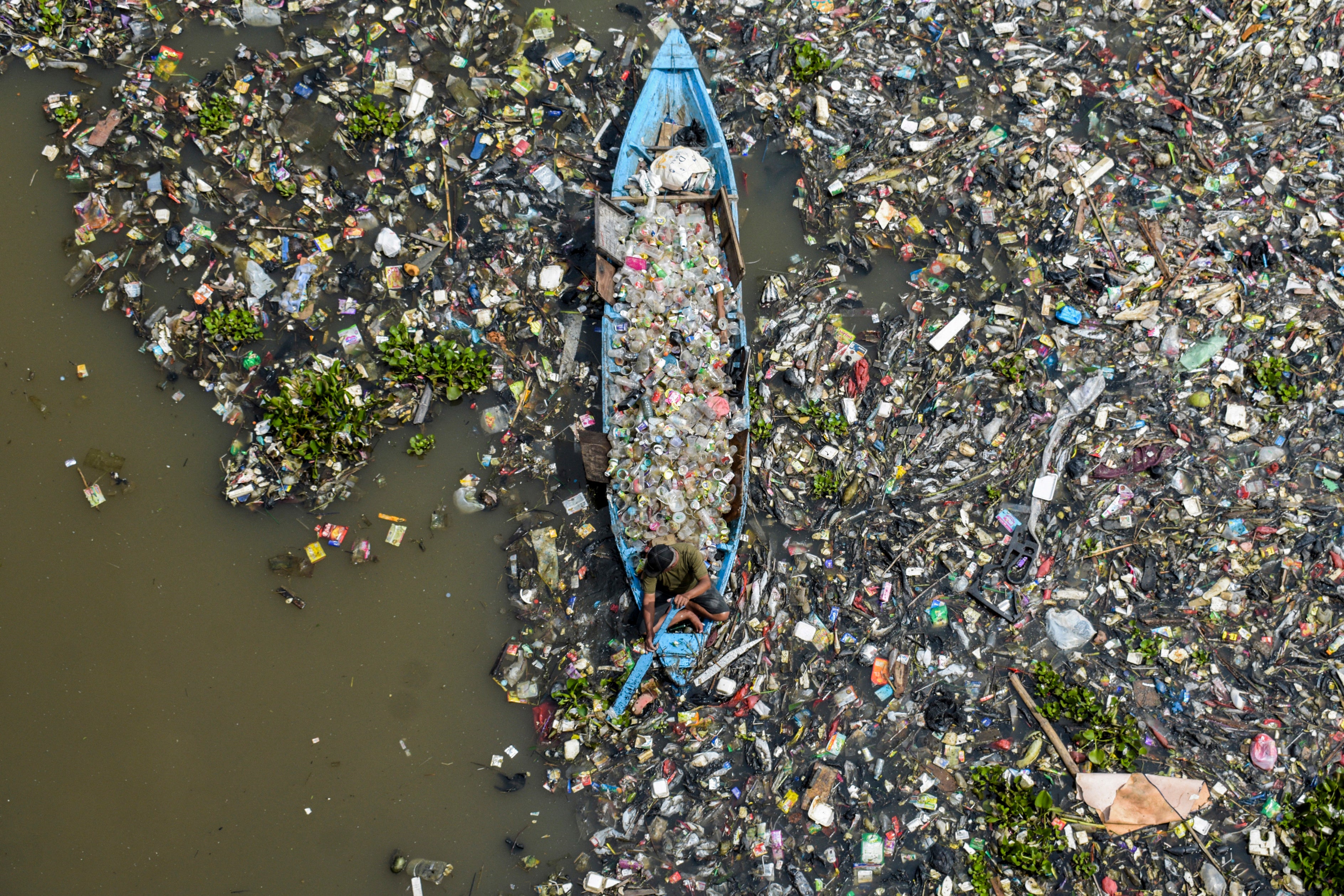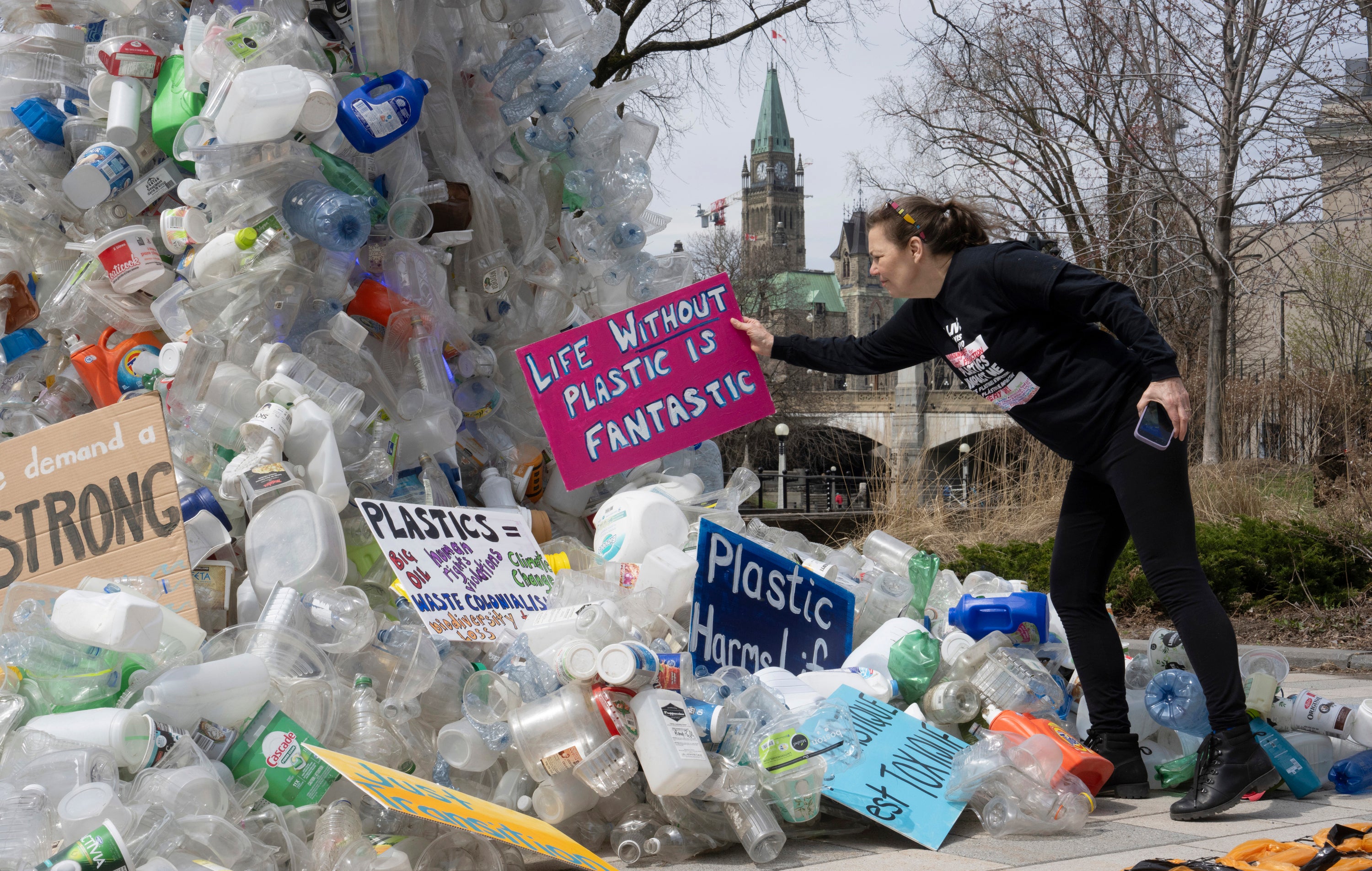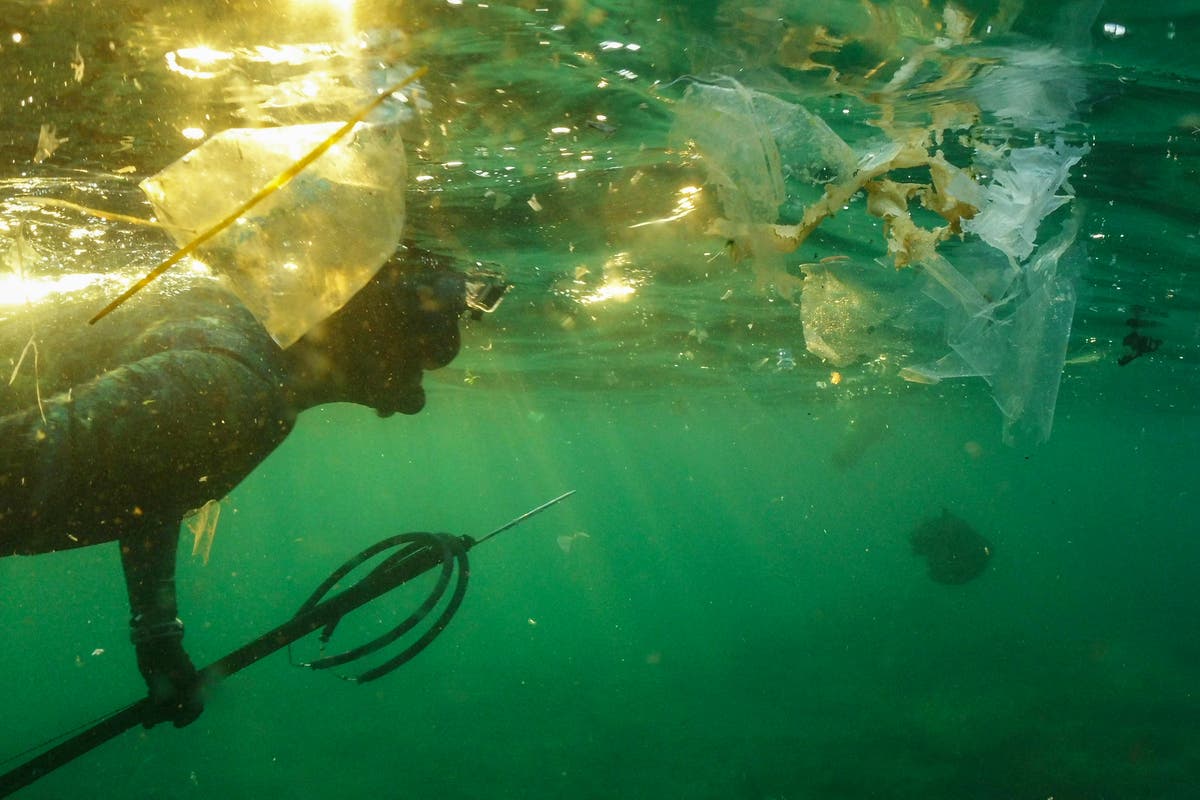German scientists have discovered a type of fungus that can break down synthetic plastics, making it a new weapon in the global fight against plastic pollution.
A team from the Leibniz Institute of Freshwater Ecology and Inland Fisheries in Berlin has discovered that certain microfungi can survive exclusively on plastics by breaking them down into simpler forms.
While this is a promising breakthrough, especially in terms of combating marine plastic pollution, experts point out that it is not a panacea.
Researchers have observed that microfungi in Lake Stechlin in northeastern Germany can survive on synthetic polymers without other carbon sources.
“The most surprising result of our work is that our fungi were able to grow exclusively on some of the synthetic polymers and even produce biomass,” lead researcher Hans-Peter Grossart told Reuters.
The ability to use plastic as their sole food source allows the Stechlin fungi to break down plastic more efficiently than other organisms that may require additional nutrients or carbon sources.
Researchers say the fungi’s ability to break down plastic may have evolved in response to the overwhelming presence of the synthetic material in their environment.

These fungi are particularly effective at breaking down polyurethane, a commonly used material in construction foams, among other things.
Four of the 18 fungal strains studied by the Leibniz Institute team are particularly “hungry,” meaning they can efficiently utilize plastics, especially polyurethane, Reuters reported.
They are less efficient at breaking down polyethylene, which is often used in plastic bags, and microplastics from tire wear, which are contaminated with heavy metal additives that hinder degradation.
Can mushrooms solve the plastic crisis?
While the discovery of plastic-eating fungi is a step forward, it is unlikely to solve the problem of plastic pollution on its own.
According to experts, the most effective way to combat plastic pollution is to reduce the amount of material entering the environment.

The enzyme activity of the fungi responsible for breaking down plastic depends heavily on external factors such as temperature and nutrient availability, making them more suitable for controlled environments such as wastewater treatment plants than for natural environments.
They can be particularly helpful in areas where traditional recycling methods are less effective.
Mr Grossart acknowledged these limitations, pointing out that while these mushrooms could be used in waste management facilities, they do not represent a comprehensive solution to the growing problem of plastic waste.
“We should definitely try to release as little plastic as possible into the environment. Plastic is made from fossil carbon, and when the fungi decompose it, it is no different than when we burn oil or gas and release CO2 into the atmosphere,” he said.
Organisms that degrade plastic have been the focus of science for years. To date, over 400 species of fungi and bacteria have been discovered that degrade plastic.
Last year, a study published in the Journal of Hazardous Substances by researchers at the Royal Botanic Gardens in Kew, London, said they had identified 184 strains of fungi and 55 strains of bacteria capable of breaking down polycaprolactone, a biodegradable polyester commonly used in the manufacture of polyurethanes.
A well-known example of a plastic-eating bacterium is Ideonella sakaiensis, discovered in Japan in 2016. It can digest polyethylene terephthalate, which is commonly used in plastic bottles that are difficult to recycle using conventional methods.

Aside from plastic-eating organisms, scientists are trying to develop “self-digesting plastic” by incorporating plastic-eating bacterial spores into polyurethane, a widely used but difficult to recycle material.
While these organisms offer hope, their application remains limited by the conditions they need to thrive and the slow rate at which they degrade plastics.
Prof. Steve Fletcher, director of the Revolution Plastics Institute at the University of Portsmouth, told the BBC earlier this year that the most effective way to combat pollution was to agree legally binding global cuts in plastics production.
“Potential solutions of this kind need to be cautious. They may give the impression that we need to worry less about plastic pollution because any plastic that enters the environment will degrade quickly and, ideally, safely. But for the vast majority of plastics, this is not the case,” he said.

Negotiations are currently underway on the first global plastics treaty, with the final phase set to take place in South Korea later this year. The treaty can provide a roadmap for how the world can deal with the growing mountains of plastic waste that find their way into everything from the deepest oceans to our food and internal organs.
The application of plastic-eating organisms is still in its early stages. Much of the research is still focused on understanding how these processes work and how they can be deployed on a large scale.
Global plastic production has increased from 1.7 million tons in 1950 to 400 million tons in 2022, according to Statista. And despite increased efforts, only nine percent of plastic waste is recycled worldwide, the UN reports.




